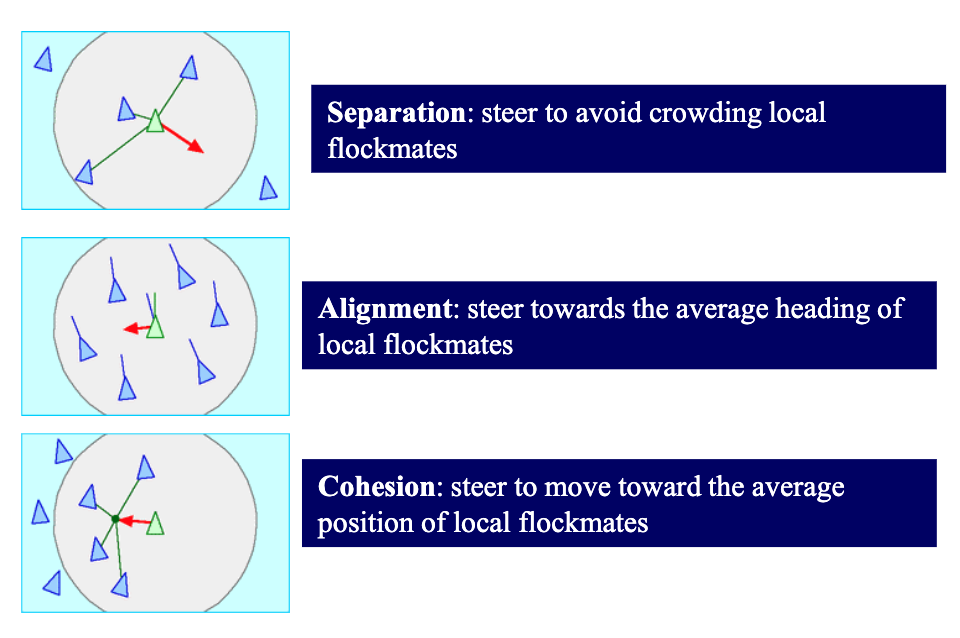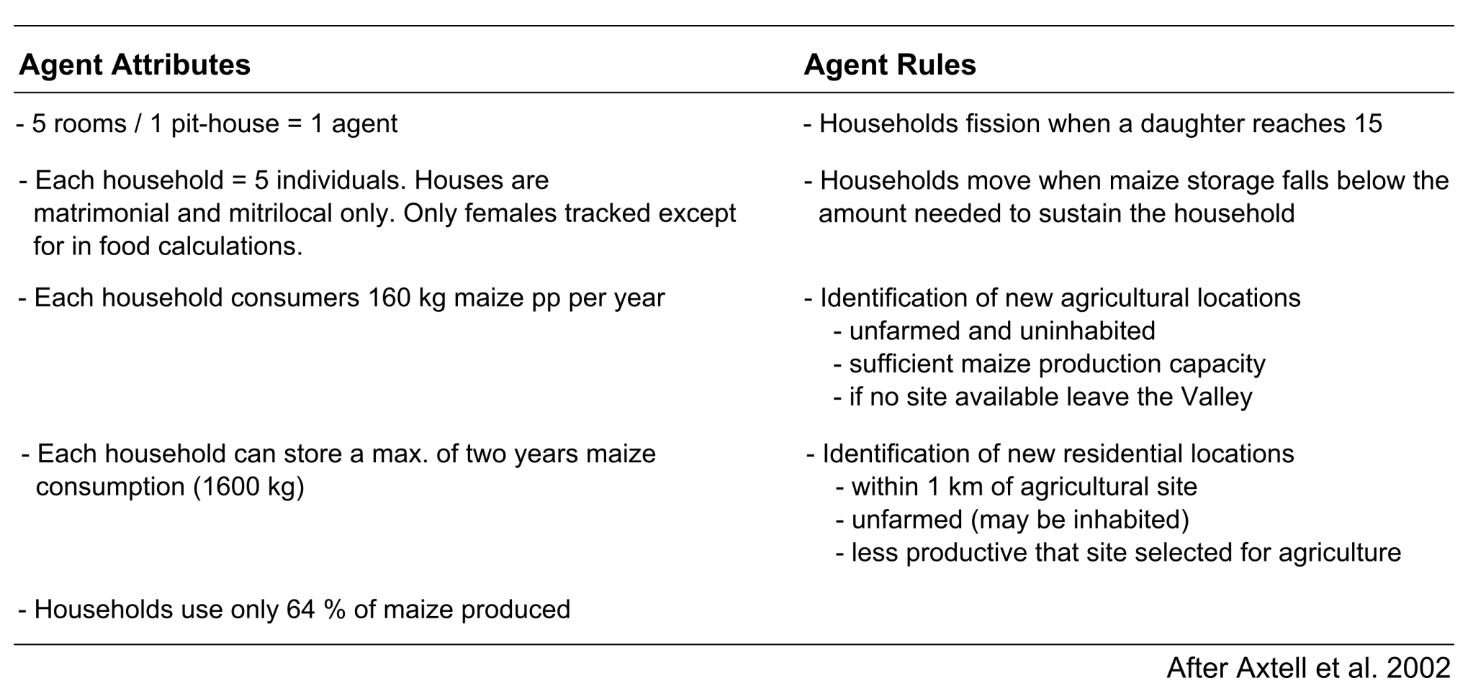Lecture 9 - Agent-Based Modelling
1/6
There's no tags or description
Looks like no tags are added yet.
Name | Mastery | Learn | Test | Matching | Spaced |
|---|
No study sessions yet.
7 Terms
Agent-Based Modelling
Allows us to focus on the spatial and temporal dimensions of a system (unlike other models).
When it comes to analysis space, there are some challenges:
Spatial data is costly (especially for larger systems)
Numerical techniques struggle with spatial variability
Our understanding of spatial processes is poor
They’re a type of simulation models because they are recreate the spaces of some sort of system. This is typically required for dynamic ystems that aren’t tractable, tend to be very specific & highly detailed to that system, but may also have some generalisations or abstractions
Agents
The individuals or ‘units’ that can take ‘decision’ according to a set of predefined rules (could be probabilistic as well, usually has assumptiosn)
These agents can move and interact in the (virtual world) based on our understanding of the system
Collective behaviours (emergence) can arise when feedbacks are present (leading to patterns)
They’re used for many things such as simulating virus spread, in video games, rebellions, economic applications, and so on.

The Flocking Model
A model that is used to simulate the flocking pattern of birds. The agents in the models are the birds (represented by the triangles). They move and interact with one another according to three rules:
Separation
Alignment
Cohesion
In the end, when the agents take into acocunt these rules, the model simulates flocking-like patterns
ABM for Reconstructing Archaeological Change
Models are also able to reconstruct and interpret the past (besides just predicting the future or understanding the present).
In archaeology, it’s used to explore human-environment interactions
In ecology, it’s used to reconstruct ‘baseline’ ecosystem conditions
By climate scientists, to explore paleoclimatic conditions
The “Anasazi” was an ancient Native American population developed a rich culture and civilisation around the Long Valley.
The environment they were in was in a way that made it extremely isolated, making it a closed system that was easy to model
While there, they had a rapid collapse and abandonment of the area. Researchers have been wondering why this occured and are using models to under it.
Later renamed to the Ancestral Pueblo due to the negative meaning of Anasazi (ancient enemy).
With the environmental observational data, we’ve been able to do paleoenvironmental reconstructions with ethnographic data of this location
This gave us things such as surface geomorphology, reconstructing trees, even rat scat, and so on to serve as archaeological evidence and to inform modelling.
Combining this all, we were able to estimate things such as annual maize production, food requirements, hydrological conditions, whether soils were fertile, and so on

The Artificial Ancestral Pueblo Model
An agent-based model that modelled the human activity (human deiciosn-making) in the ladnscape in response to a changing environmental condition through time and space in Long Valley.
The agents in this model as automous household units, each with a series of rules and attributes to inform behaviours in response to environmental factors.
With just these environmental & resource factors alone, the AAP model was able to mimic temporal dynamcis quite well
In the observed data, the number of households increase quickly and dramatically. Then, it crashed a little where to rose again a little bit later. Then, there was a rapid decline to zero
The model also showed a similar pattern. It wasn’t perfect as it tended to underestimate growth or overestimate it. But nontheless, the trends were still there. However, it was not able to show the decline to zero as shown in the real world data (no complete collapse)
It is likely that this is because the model didn’t take into acocunt the social factors that may influence human behaviour in staying or leaving an area. More recent studies have focused on the social factors:
Things such as economic disparties, internal conflicts, and so on causing social fragility
But all of it is mainly speculative because there is no data to validate it
We could also ask the descendants of the people themselves as they are more likely to know what happened.
So, this model generated more question rather than answers, but still served as a tool of learning that allowed us to synthesise disparate sources of data to better our understanding
ABM & Cliff Erosion
This model was developed to understnad human behaviour, property markets, and essentially answer the question “When should we leave?” when it comes to having property near cliff edges.
This was focused on Devonport, Auckland, where it has been historically sought after. However, after the current cliff erosions, there has been worries and fears of what it may mean for the hosues near the cliffs, the people living inside them, and their values.
Before anything, they first defined the cliffs by collecting data on elevations, where transect areas, and deciding what was cliff or coastline.
Then, they focused on how cliff erosion occured:
Gradual where erosion doesn’t extend beyond cliff extend & moves parallel to current orientation
Storm where it occurs after gradual erosion and sets new cliff positions with new split events.
This allowed them to model the risks of where a house is in relation to the cliff edge. This was then used to inform an agent-based model where the agents were househould owners with their home having an initial value and risk.
Over time, the risk would increase (as cliff erosion occured) and so would the value of the house. The agents then had specific behaviours based the risk, value of the house, and so on
In the end, it helped us understand that the longer home owners stayed and endured the risk, the house value will decrease essentially to a point where it’d cost less to just be away from the cliff edge.
Limitations of Agent-Based Models
Too simplistic
Rules tend to be arbitrary (but necessary for the model to run well)
It’s hard to validate the model when there is no real-world system to refer to